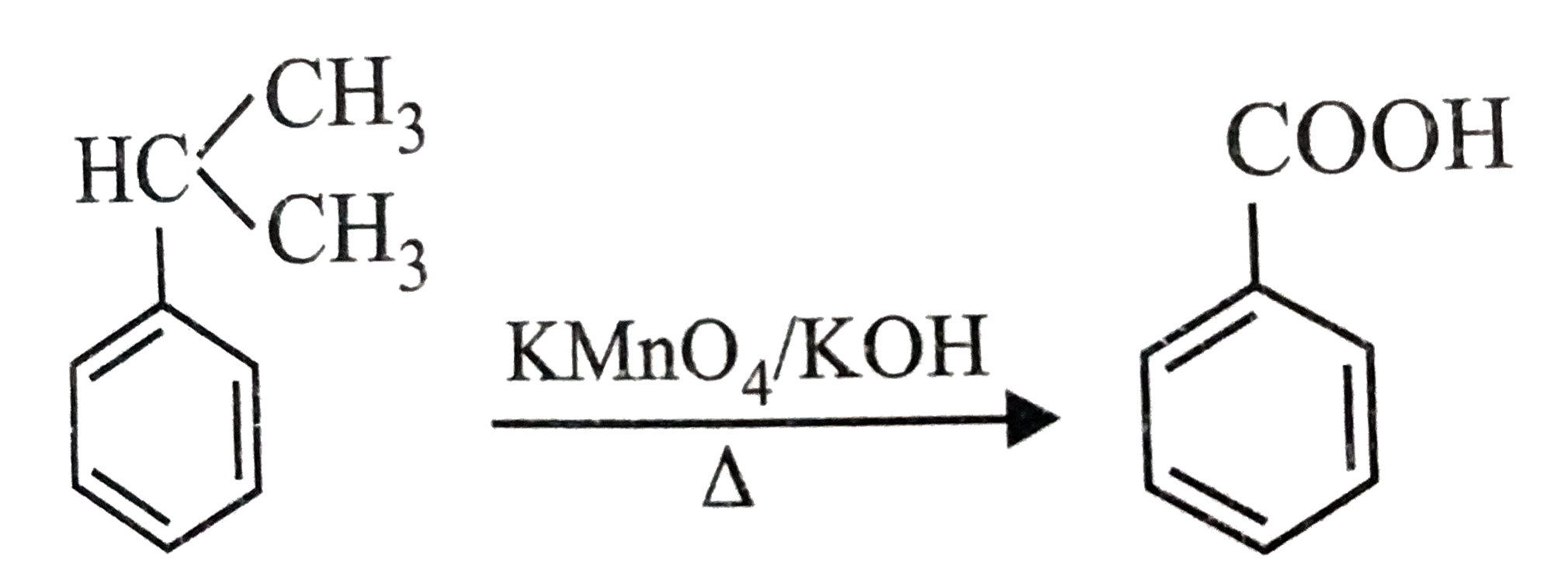No reaction occurs in which of the following equations?
Iө−Fe2+→
F2+2NaCl→
Cl2+2NaF→
I2+2NaBr→
The correct Answer is:A, C, D
To determine in which of the given equations no reaction occurs, we will analyze each option based on the standard reduction potentials of the halogens and the reducing agents involved.
1. Understand the Order of Reduction Potentials:
The standard reduction potentials for halogens are as follows:
- F2 > Cl2 > Br2 > I2
This means that F2 is the strongest oxidizing agent, and I2 is the weakest.
2. Analyze Each Option:
- Option A: Fe+I−→Fe2++I2
- Here, Fe is a better reducing agent than I−. Since Fe can reduce I− to I2, this reaction will not occur as Fe cannot oxidize I− effectively. No reaction.
- Option B: Fe+Cl2→Fe2++Cl−
- In this case, Cl2 can oxidize Fe to Fe2+ and reduce itself to Cl−. This reaction is feasible. Reaction occurs.
- Option C: Cl2+2NaF→?
- Here, Cl2 cannot displace F− because F2 is a stronger oxidizing agent than Cl2. Therefore, this reaction will not occur. No reaction.
- Option D: I2+Br−→?
- In this case, I2 cannot displace Br− because Br2 is a stronger oxidizing agent than I2. Thus, this reaction will also not occur. No reaction.
3. Conclusion:
No reaction occurs in options A, C, and D.
Final Answer:
No reaction occurs in:
- Option A: Fe+I−
- Option C: Cl2+2NaF
- Option D: I2+Br−
The standard reduction potentials for halogens are as follows:
- F2 > Cl2 > Br2 > I2
This means that F2 is the strongest oxidizing agent, and I2 is the weakest.
- Option A: Fe+I−→Fe2++I2
- Here, Fe is a better reducing agent than I−. Since Fe can reduce I− to I2, this reaction will not occur as Fe cannot oxidize I− effectively. No reaction.
- Option B: Fe+Cl2→Fe2++Cl−
- In this case, Cl2 can oxidize Fe to Fe2+ and reduce itself to Cl−. This reaction is feasible. Reaction occurs.
- Option C: Cl2+2NaF→?
- Here, Cl2 cannot displace F− because F2 is a stronger oxidizing agent than Cl2. Therefore, this reaction will not occur. No reaction.
- Option D: I2+Br−→?
- In this case, I2 cannot displace Br− because Br2 is a stronger oxidizing agent than I2. Thus, this reaction will also not occur. No reaction.
No reaction occurs in options A, C, and D.
No reaction occurs in:
- Option A: Fe+I−
- Option C: Cl2+2NaF
- Option D: I2+Br−
Topper's Solved these Questions
- REDOX REACTIONSBOOK - CENGAGE CHEMISTRY ENGLISHCHAPTER - REDOX REACTIONSEXERCISE - Exercises (Single Correct)
91 Videos
- REDOX REACTIONSBOOK - CENGAGE CHEMISTRY ENGLISHCHAPTER - REDOX REACTIONSEXERCISE - Exercises (Assertion-Reasoning)
15 Videos
- REDOX REACTIONSBOOK - CENGAGE CHEMISTRY ENGLISHCHAPTER - REDOX REACTIONSEXERCISE - Exercises (Linked Comprehension)
24 Videos
- PURIFICATION OF ORGANIC COMPOUNDS AND QUALITATIVE AND QUANTITATIVE ANALYSISBOOK - CENGAGE CHEMISTRY ENGLISHCHAPTER - PURIFICATION OF ORGANIC COMPOUNDS AND QUALITATIVE AND QUANTITATIVE ANALYSISEXERCISE - Assertion Reasoning Type
5 Videos
- S-BLOCK GROUP 1 - ALKALI METALSBOOK - CENGAGE CHEMISTRY ENGLISHCHAPTER - S-BLOCK GROUP 1 - ALKALI METALSEXERCISE - Archives Subjective
8 Videos
Similar Questions
Knowledge Check
Dark reaction occurs:
Aonly in lightBonly in the absence of lightCindependent of lightDall of theseWhich of the following reactions does not occur ?
A B
B C
C D
D
The reaction which is taking place in nickel cadmium battery can be represented by which of the following equations?
ACd+NiO2+2H2O→Cd(OH)2+Ni(OH)2BCd+NiO2+2OH−→Ni+Cd(OH)2CNi+Cd(OH)2→Cd→Ni(OH)2DNi(OH)2+Cd(OH)2→Ni+Cd+2H2O
Which of the following reaction does not occur?
View SolutionAn elementary reaction A and B is second order reaction. Which of the following rate equation must be correct?
View SolutionWhich of the following reactions will not occur ?
View SolutionWhich of the following does not occur?
View SolutionFor a reaction in which all reactants and products are liquids, which one of the following equations is most applicable?
View Solution
